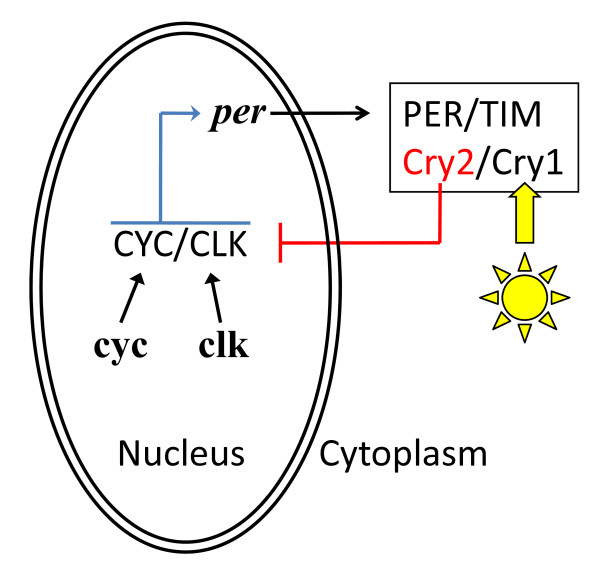Figure 1.
Simplified schematic of circadian clockworks. This schematic is based on the likely state of ancestral insect clocks [3,4] and includes the two genes manipulated by Ikeno et al. [6]. The transcription of cycle (cyc) is continuous and that of clock (clk) is rhythmic. The translated proteins (CYC and CLK) form a CYC-CLK heterodimer that promotes the transcription of period (per). per mRNA is transported to the cytoplasm where it is translated into its protein (PER) and forms a complex with the timeless protein (TIM), and two paralogous proteins of cryptochrome (CRY1 and CRY2). CRY1 is the likely photoreceptor that enables the circadian clock to entrain to daily light:dark cycles. CRY2 is a light-insensitive protein that acts as the main transcriptional repressor of the circadian clockworks. In Riptortus pedestris [6], double-stranded RNA directed against cyc (cyc RNAi) effectively reduces cyc and, as expected, per expression; per RNAi effectively reduces per expression and would not be expected to reduce cyc expression. Hence, the principal difference between the effects of cyc and per RNAi at the molecular level would be the level of cyc expression, since per expression is blocked in both cases. Also, the reduced levels of cyc and per that they achieve result in arrhythmicity of daily cuticle deposition, that is, render the circadian clock dysfunctional.

